|
United States : California
23.0 miles (37.0 km) NNE of Essex, San Bernardino, CA, USA
Approx. altitude: 860 m
(2821 ft)
([?] maps: Google MapQuest OpenStreetMap topo aerial ConfluenceNavigator)
Antipode: 35°S 65°E
Accuracy: 3 m (9 ft)
Quality:
Click on any of the images for the full-sized picture.
| 35°N 115°W (visit #9) |
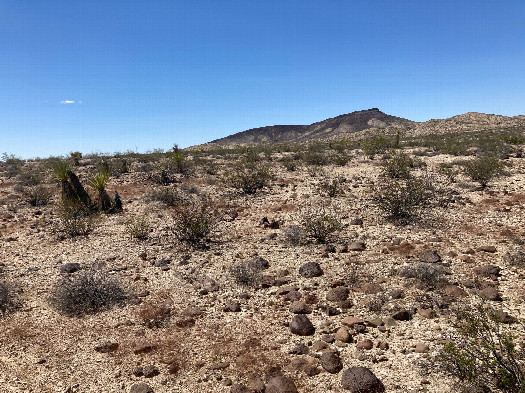 (visited by Michael G) 18-May-2025 -- Who needs a rest area to stretch their legs when you can go hunt down a confluence? That's what I was thinking when I embarked on a long day of driving west along I-40, knowing I could have my pick of several desolate points along the 35th parallel through the Mojave Desert. 35N 115W lies in the southeast part of the Mojave National Preserve, making it more intriguing than other options — I'd never been to a confluence in the United States' National Park system. (I crunched the data and found that this is one of just 11 contiguous United States confluences within NPS unit boundaries!) Visiting this point looked like it'd cost me a couple hours and require some careful choices, but I was ready to get out of the car for a while and see the desert up close. Almost every previous visitor has had a unique path to this confluence, some getting closer than others in their vehicles. I knew that my car was not equipped to handle the four-wheel drive tracks that come within a few hundred meters of 35N 115W, but I also wasn't prepared to hike a 15 mile round trip from the nearest paved road (like William Eskel had done in 2007). I settled on a median strategy: proceed as far as possible on relatively "good" dirt/sand roads, in order to put the necessary hiking within a two or three hour window of completion. I got off I-40 at exit 133, proceeded north on US 95 for several miles to old Route 66, then continued west about 10 minutes to the junction of a seemingly unnamed dirt track. This junction is at [34.91644, -114.96256]; I note this because it's a blink-and-you-miss-it sort of deal, and I had to flip a u-turn to go back after missing it the first time. I turned north, driving up and over the train tracks that parallel Route 66 (stopping to look both ways, since these tracks are definitely still in use), before coming to a sign (see photo) that identified the road as property of the Metropolitan Water District of Southern California. The wording thankfully indicated it was free to pass, though served as a firm warning: i.e., "if anything happens to you while you're out here, we're not liable". With this in mind, I chose to push on for as long as the road was safe (and as long as I had cell signal, without which I would likely turn around). As I drove slowly down this road, I wandered how many vehicles traversed it per week (or per month, for that matter)... surely not more than a few, given the land doesn't appear to be used for much (no grazing, no mining I could see, and certainly no farming). There were some subtly visible tire tracks, probably not very recent. In a few spots some dirt scraped against the undercarriage of my vehicle, but it was otherwise smooth sailing along this perfectly straight path: about 4.6 miles (7.5 km) from old US 66, I reached a crossing with the southwest-northeast oriented powerline road, described and used by several previous visitors. Finding a strangely large mound of rocks and a flat, open piece of dirt, I opted to park my car at this junction [34.98340, -114.95907]. No use pushing my luck any further since I was already well within a reasonable walking distance, 2.6 miles (4.2 km)! I promptly gathered my water and snacks into a backpack, donned long-sleeves and a hat to avoid sunburn, and put on boots in the hopes that they would be better defense against potential snakes (which happily never materialized). With the clock reading about 1:25 pm, I set off northwest toward the confluence. The terrain variation and vegetation density was minimal enough that I was able to pick a visual waypoint on the horizon (a small hill) and simply walk in its direction without having to stare at the GPS. This offered me the opportunity to look around and enjoy the desert landscape: mostly a sea of brittle dry shrubs, scattered Mojave yuccas, and the odd barrel cactus (see this photo from along the way). The ground was a mix of dirt and assorted rocks — some shiny white quartz, black volcanic-looking rocks, and a number of others I couldn't begin to identify. These rocky areas gave way to sandy washes (such as this one) every several minutes of walking, most of them leading toward the hills to my northwest. When I wasn't walking it was perfectly quiet and still, barring the occasional breeze or rumble of a distant airplane. I crossed a couple of four-wheel drive tracks during the course of my hike, one of them marking the boundary of the National Preserve. Except for the fact that they were artificially straight and uniformly wide, these tracks looked very similar to the washes. Animal-wise, I saw plenty of burrowing holes along the way but no obvious activity — the residents were probably underground for the day. Occasionally a speedy lizard darted across my path from shrub to shrub, perhaps disconcerted by my presence. About one hour after leaving the car, the GPS showed that I was closing in on my goal. This was quite relieving, since I was admittedly getting a bit impatient (and warm). The GPS coordinates ticked down to all zeroes at a spot near some yuccas and I pumped my fist in celebration: I'd arrived at 35N 115W, my second California confluence and another point of several I've hit along the 35th parallel. Like much of the preceding walk, it was silent here. Looking southeast from where I'd come, the parking spot rock pile was a white speck on the horizon, and I could still see the large powerline towers. There was no visible evidence of human activity facing north and west from the confluence, just an unspoiled sample of California desert. The Kestrel weather meter I'd brought along logged a fairly mild temperature of 83°F (28°C), pretty nice for a May afternoon in the Mojave. By the summertime (when 90s and 100s are all but certain), a long hike in the middle of the day out here wouldn't be as pleasant. Of additional interest, this confluence ranks as the 15th driest in the continental United States (of about 815), per data from Oregon State's PRISM climate dataset — this spot averages a measly 6.2 inches (157 mm) of precipitation per year, evidenced by the parched groundcover and vegetation. (The confluences due south of here, 34N 115W and 33N 115W, are the two climatologically driest in the country.) Ten minutes after arriving, I decided to start my return; it was a tad warmer than earlier (and I was still wearing long-sleeves), plus I had more driving to do. The distant rock pile was a welcome goal to walk towards, since I could easily gauge how far away I was from the parking spot. The boost from having visited a new confluence made the hike back feel quicker, my curiosity satisfied. During the course of the next hour, I thought about the incredible vastness of the Southwest deserts — landscapes like these stretch on for hundreds of miles, and it's hard to imagine crossing the whole thing without the luxury of an air conditioned vehicle and a good freeway. It was nearly 3:30 pm when I made it back to my car, the round trip hike having been roughly 5.2 miles (8.3 km). I drove out the way I came in, watching a train cross my view as I approached old Route 66 from the north. I headed west along 66 through the almost-ghost town of Goffs, the nearest populated settlement to 35N 115W, before meeting again with I-40 around 15 minutes later. It was a thoroughly enjoyable detour, as confluence visits often are. |
| All pictures |
| #1: Looking northwest at 35N 115W, located in the middle of the photo #2: Looking north from the confluence #3: Looking east #4: Looking south #5: Looking west #6: Zeroes on the GPS! #7: Sign at the start of the road I used to reach my parking spot #8: Mojave yucca #9: A stray barrel cactus #10: One of many washes along the way #11: Looking south along the road near where I parked ALL: All pictures on one page |
| Notes |
|
In the Mojave National Preserve. |

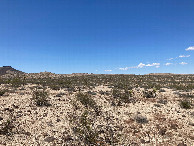
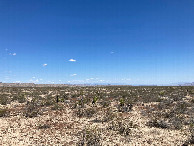
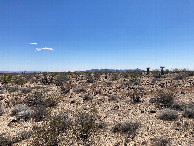
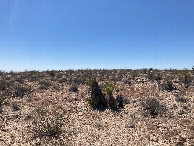
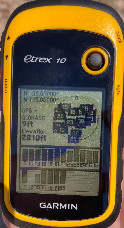
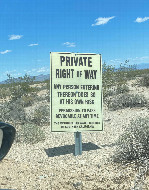
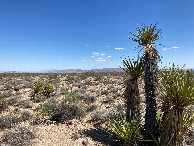
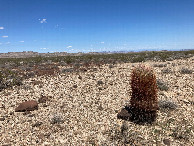
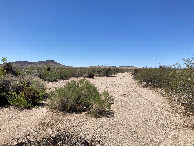
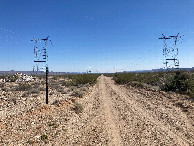
![Visit #8: [26-Jan-13] Visit #8: [26-Jan-13]](/us/ca/n35w115v8/preview.jpg)
![Visit #7: [28-Mar-11] Visit #7: [28-Mar-11]](/us/ca/n35w115v7/preview.jpg)
![Visit #6: [06-Jan-11] Visit #6: [06-Jan-11]](/us/ca/n35w115v6/preview.jpg)
![Visit #4: [28-Nov-09] Visit #4: [28-Nov-09]](/us/ca/n35w115v4/preview.jpg)
![Visit #3: [17-May-07] Visit #3: [17-May-07]](/us/ca/n35w115v3/preview.jpg)
![Visit #2: [29-Aug-03] Visit #2: [29-Aug-03]](/us/ca/n35w115v2/preview.jpg)
![Visit #1: [29-Dec-99] Visit #1: [29-Dec-99]](/us/ca/n35w115/preview.jpg)